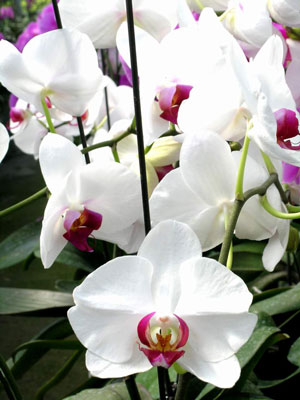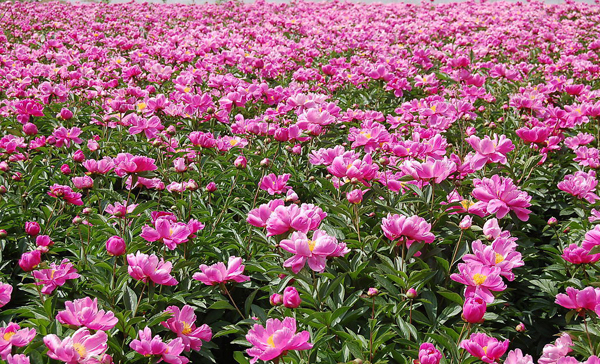The appearance of Oviductus Ranae: how to plant toad grass? Is the fresh toad grass poisonous?
Oviductus Ranae is a biennial herb of Labiatae and a traditional Chinese medicine in China, which has a wide range of distribution in China. Toad Oviductus Ranae has various effects such as heat-clearing and detoxification, cooling blood and diuresis, mainly used in the treatment of bronchitis, swelling, bleeding and other problems. Now our country also has a certain planting area of Oviductus Ranae, so how to grow it? The following editor brings you the planting technology of toad toad. Let's have a look!
Is the fresh toad grass poisonous? There is no poison, it is a kind of traditional Chinese medicine, it has the effect of treating throat, such as sore throat and so on.

1. Soil environment
Toad prairie originally belongs to a kind of weed, which can be seen all over our country, from which we can see that its growth ability is relatively strong. It can grow normally in almost all kinds of soil, but the main purpose of artificial planting is to improve yield and quality. Therefore, we choose the soil with rich soil, high softness and rich organic matter before planting. Suitable soil can further improve the growth and retention of Oviductus Ranae and increase the planting benefit. Oviductus Ranae likes to grow in a warm and humid environment, so after selecting the land, we should pay attention to watering the land preparation, improve the soil moisture and softness, and then apply sufficient base fertilizer.
2. Seed propagation
The main propagation method of Oviductus Ranae is seed reproduction, and the sowing time of Oviductus Ranae mainly varies according to different regions. In the south, for example, seeds are usually sown around September every year. After selecting the soil, the soil should be prepared and the size of the border should be controlled according to the soil area. Then mix the seeds with plant ash to improve the germination rate of the seeds. Pay attention to the sowing density to dig a good sowing hole, the depth of the sowing hole is controlled at about 5 cm, and then sprinkle diluted dung water into each hole, and then spread it into the hole comprehensively and evenly, covering a layer of fine soil.
3. Field management
After the seeding seedlings were unearthed, a thin human feces and urine water was applied in time to promote the growth of the seedlings. When the seedlings grow to about 8-9 cm, do a good job of interseedling work, pay attention to the principle of staying strong and getting weak, and then make up the seedlings with the same growth at the hole of lack of seedlings. The number of seedlings left at each hole should not exceed 5, and then the winter fertilizer should be applied once in combination with ploughing and weeding. Improve the cold resistance of seedlings and prevent them from freezing to death. Finally, in the next spring, the seedlings were ploughed and fertilized again and watered regularly to improve the growth ability of the seedlings.
4. Pest control
The disease resistance of Oviductus Ranae is relatively strong, so we can control diseases extensively in the process of planting. But Oviductus Ranae is seriously harmed by pests, such as crickets and aphids. Therefore, in the process of planting, we should often observe the growth of Oviductus Ranae and find pests in time. To avoid serious damage only found, resulting in irreparable losses. After the pests are found, they should be driven away in time, and chemicals can be used to control them properly to ensure the healthy growth of the toad.
The above is a brief introduction to how to grow Oviductus Ranae, the planting technology of toad grass is actually relatively simple. The main thing is to do a good job in management, and careful management is beneficial and harmless, so we must pay more attention to it. That's all for today's introduction. This article is for reference only. I hope it can help you all.
- Prev

Maintenance methods of Phalaenopsis
First, the maintenance of Phalaenopsis should be divided into two stages, pre-management and post-management. Each different period of time to adjust the maintenance temperature, moisture and pay attention to disinfestation, like the late maintenance of the flowering stage, water and fertilizer management is particularly important. Pay more attention to the following problems during maintenance
- Next

Culture methods of Paeonia lactiflora
1. Planting time of Paeonia lactiflora: Paeonia lactiflora likes sunshine and cold tolerance, and it should be cool and afraid of heat when the temperature is high, and it does not grow well at high temperature in summer. Autumn is the best time to plant peony. 2. Soil quality: when planting peony, you should choose sunny land with high topography and good drainage, and do not plant it in low-lying places where it is easy to accumulate water. Peony is the fleshy root.
Related
- Fuxing push coffee new agricultural production and marketing class: lack of small-scale processing plants
- Jujube rice field leisure farm deep ploughing Yilan for five years to create a space for organic food and play
- Nongyu Farm-A trial of organic papaya for brave women with advanced technology
- Four points for attention in the prevention and control of diseases and insect pests of edible fungi
- How to add nutrient solution to Edible Fungi
- Is there any good way to control edible fungus mites?
- Open Inoculation Technology of Edible Fungi
- Is there any clever way to use fertilizer for edible fungus in winter?
- What agents are used to kill the pathogens of edible fungi in the mushroom shed?
- Rapid drying of Edible Fungi

